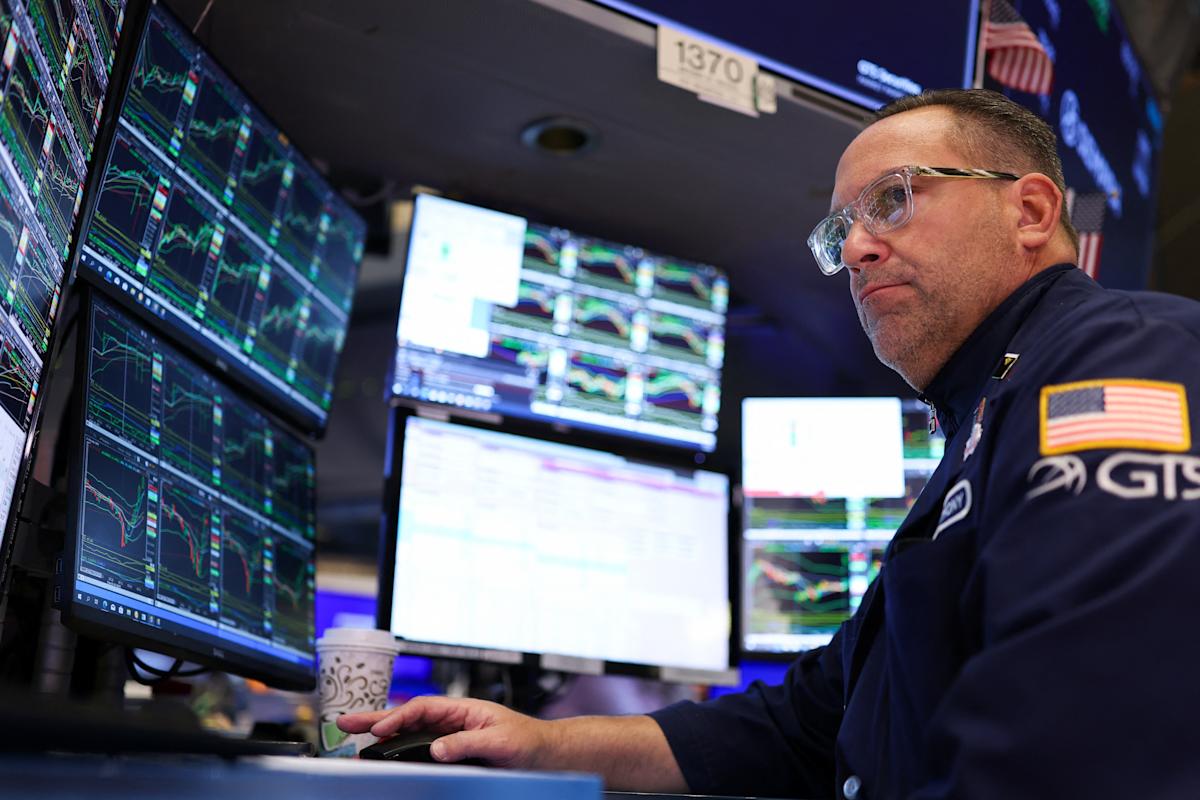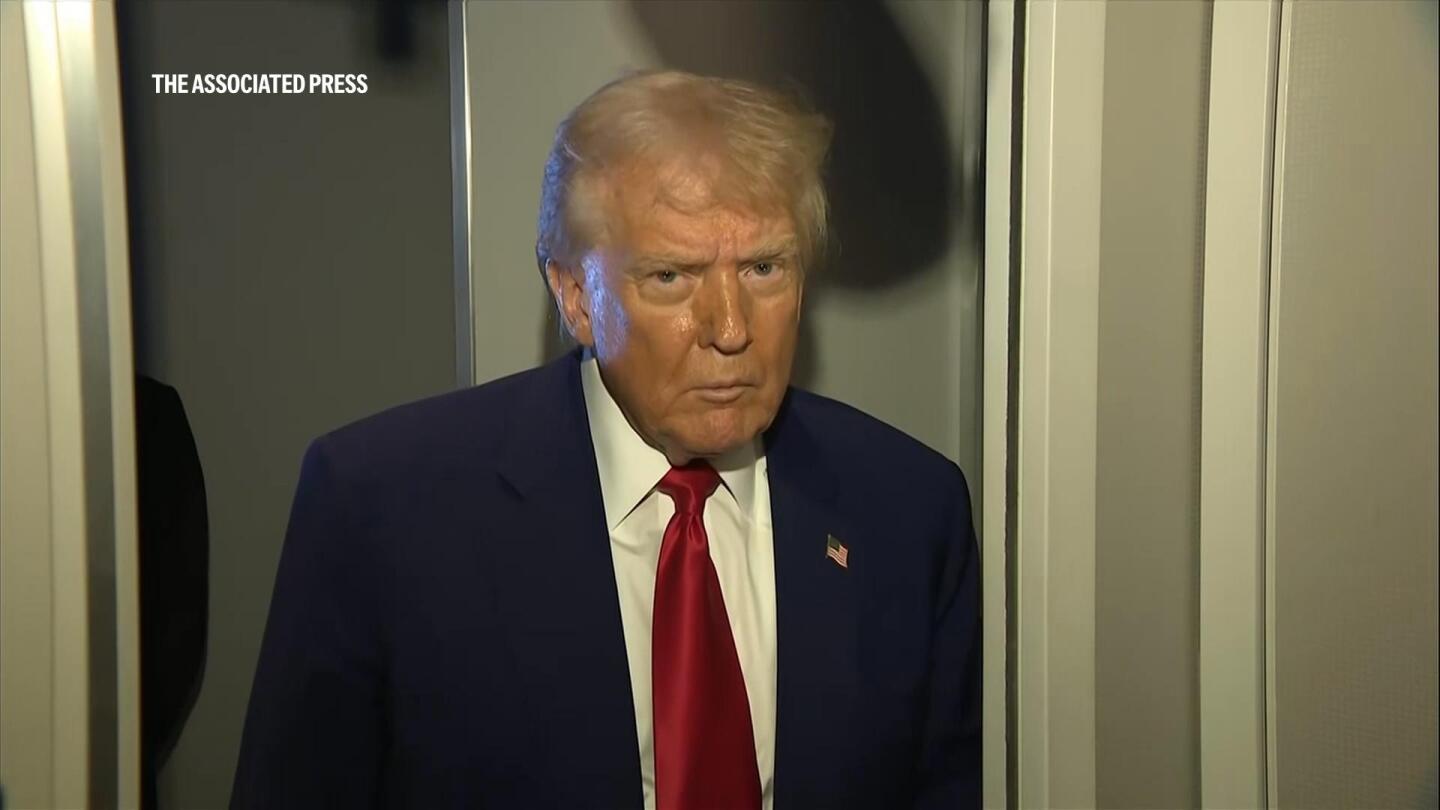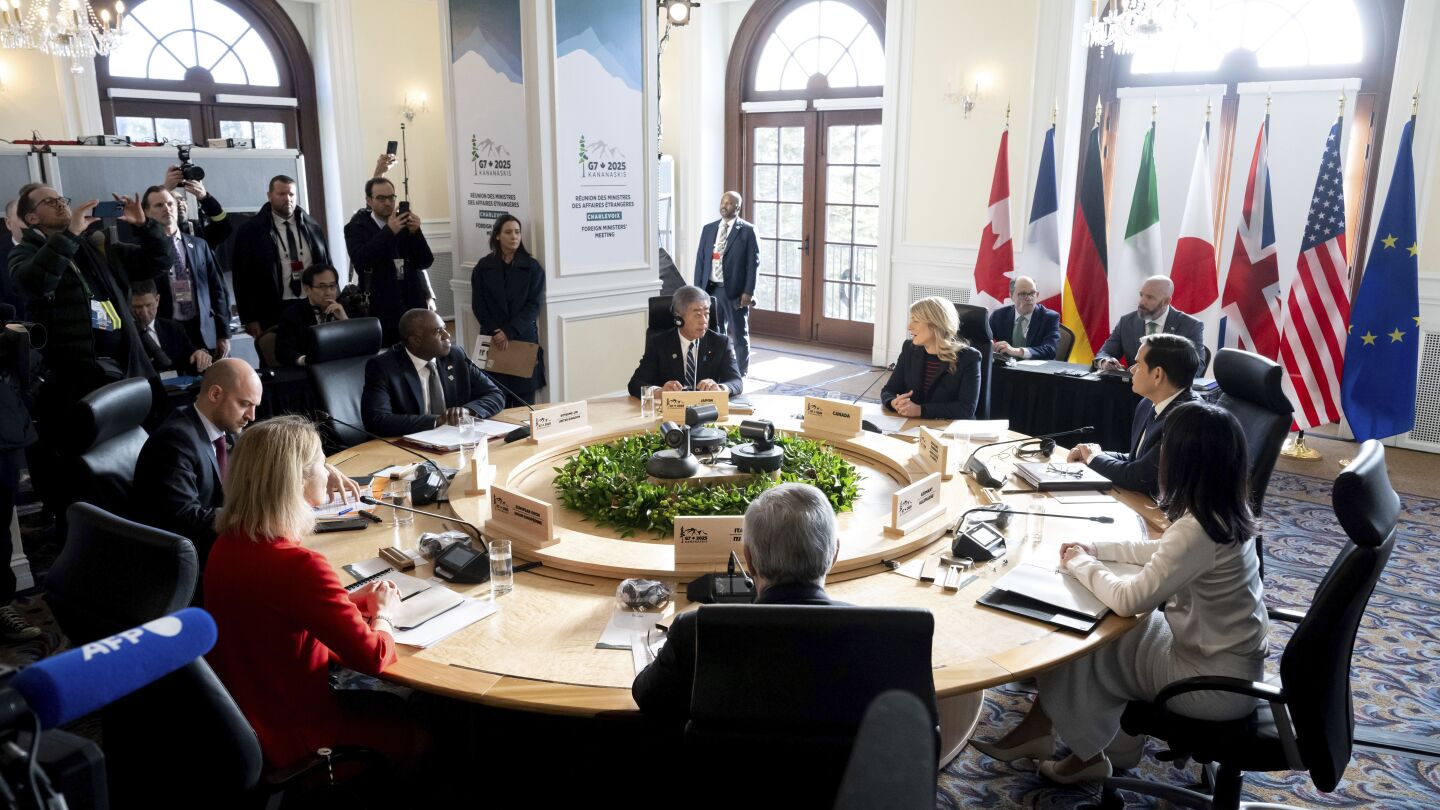Unlock stock picks and a broker-level newsfeed that powers Wall Street.
Updated 2 min read
In This Article:
US stocks tanked on Friday as Wall Street grappled with President Trump’s escalating trade war and weighed signs of reinvigorated inflation pressures amid souring consumer sentiment.
The Dow Jones Industrial Average (^DJI) dropped more than 700 points or nearly 1.7%, while the benchmark S&P 500 (^GSPC) fell almost 2%. The Nasdaq Composite (^IXIC) dropped 2.7% as tech stocks led the declines.
The major averages fell on Friday after the release of a hotter-than-expected Personal Consumption Expenditures index reading, which includes the Federal Reserve’s preferred inflation gauge of “core” PCE. The reading showed prices increased more than expected last month, rising 0.4% month over month and 2.8% year over year, continuing a stubborn plateau on the path to the Fed’s 2% target.
Nasdaq GIDS – Delayed Quote USD
^IXIC ^DJI ^GSPC
Meanwhile, US consumer sentiment in March plummeted to its lowest level since November 2022. The latest reading from the University of Michigan came in at 57, down from a 64.7 reading in the prior month, as consumers fretted about inflation and the broader economy, perhaps most notably in the labor market.
On Friday President Trump said he had a “very good talk” with Canadian Prime Minister Mark Carney, his first conversation with him since Carney was elected earlier this month. When asked about tariffs however, the president said he will “absolutely” follow through with levies against the country.
Stocks have had a roller coaster week, starting off on a high on hopes that Trump would temper his tariff plans and then abruptly diving beginning on Wednesday upon news of new duties on auto imports.
Markets continued to slide Thursday as Wall Street digested Trump’s 25% levies on foreign cars along with more hawkish comments on what lies ahead in the trade war. April 2, the date when broad reciprocal tariffs are set to take effect, is looming large.
Read more: The latest on Trump’s tariffs
Fed officials have projected higher inflation and slower economic growth amid new tariffs, though Fed Chair Jerome Powell has reassured Wall Street that rising prices will likely be “transitory.”
But Powell’s words are fading into the background as Trump’s trade war escalates and more Fed officials say they aren’t exactly sure where the economy goes next, with one policymaker describing the situation as “zero visibility” in a “dense fog.”
The Federal Reserve Bank of Atlanta’s GDPNow index now forecasts that US gross domestic product (GDP) will fall 2.8% in the first quarter, compared to a previous projection of a 1.8% decline released two days ago.
LIVE COVERAGE IS OVER 21 updates
-
Stocks sink as inflation, tariff fears spark tech sell-off
Tech and Consumer Discretionary stocks led the market sell-off on Friday as investors assessed President Trump’s escalating trade war as well as data signaling sticky inflation and low consumer sentiment.
The Dow Jones Industrial Average (^DJI) tumbled more than 700 points or 1.7%, while the benchmark S&P 500 (^GSPC) fell nearly 2%. The Nasdaq Composite (^IXIC) tumbled 2.7% as Big Tech led the declines.
The 10-year bond yield (^TNX) also moved down to 4.25%, its lowest level since January as investors shifted to treasuries.
Several catalysts contributed to the sell-off including the release of a hotter-than-expected Personal Consumption Expenditures index reading.
Consumer confidence, which hit its lowest level since November 2022, also fueled the sell-off.
Trump’s tariff plans also have spooked markets as investors went risk-off. Investors expect the Trump administration to announce retaliatory tariffs on April 2. Earlier this week Trump announced levies on foreign-made autos.
-
Bitcoin tumbles 4% as investors go risk-off
Bitcoin (BTC-USD) tumbled more than 4% to sink below $84,000 on Friday as the investors went risk-off amid inflation and tariff worries.
The world’s largest cryptocurrency sank along with other risk assets. High-growth stocks and consumer discretionary equities were the hardest hit during the session following tumbling consumer sentiment data and a hotter-than-expected reading of the “core” Personal Consumption Expenditures (PCE) index.
The gauge, which strips out food and energy costs and is closely watched by the central bank, rose 0.4% from the prior month during February, above economists’ expectations for a 0.3% increase. The reading was higher than the 0.3% increase seen in January.
Investors also expect the Trump administration to announce retaliatory tariffs on April 2. This week, President Trump announced levies on foreign-made autos.
-
Lululemon warns about ‘cautious consumer’ as inflation, tariff concerns take a toll
Brooke DiPalma reports:
Read more here.
-
CoreWeave stock volatile after IPO in first big test of AI trade
CoreWeave stock (CRWV) turned higher by more than 2% in afternoon trading after making its debut on the Nasdaq. Shares of the AI cloud computing provider initially fell as much as 5.8% in the opening trade.
Yahoo Finance’s Laura Bratton reported on CoreWeave’s public debut:
-
Amazon, Tesla, Google lead tech sell-off
Amazon (AMZN), EV leader Tesla (TSLA), and Google parent company Alphabet (GOOGL, GOOG) led the market decline on Friday as Consumer Discretionary and Tech sank.
Data suggesting sinking consumer confidence and sticky inflation amid hotter-than-expected wholesale prices prompted investors to sell high-growth stocks.
E-commerce giant Amazon declined more than 4% while Tesla fell more than 3%, though shares of the EV maker were still expected to end the week in positive territory.
Social media company Meta (META) and Alphabet also fell, along with AI chip giant Nvidia (NVDA), software firm Microsoft (MSFT), and iPhone maker Apple (AAPL).
-
Coreweave shares open at $39 per share, below IPO price of $40
Shares of CoreWeave (CRWV) opened at $39 each on Friday, more than 2% below their IPO price of $40.
As Brian Sozzi reports, the company is pushing back on fears of overbuilt AI infrastructure and a bubble in the sector.
Read more here.
-
UBS latest firm to lower S&P 500 price target for 2025
The recent market decline has prompted another Wall Street strategist to revise its S&P 500 forecast lower for 2025.
On Friday, UBS Global Wealth Management head of US equities David Lefkowitz predicted earnings would come in weaker than previously expected, prompting a trim to the firm’s year-end price target to 6,400 from 6,600 on the broad-based index.
“We still believe that US stocks can recover and post gains for the year. However, recent economic weakness and our expectation that tariffs will be at the higher end of our base case prompts us to lower our 2025 S&P 500 EPS estimate from USD 270 (8% growth) to USD 265 (6% growth),” Lefkowitz wrote in a note.
“We therefore trim our year-end S&P 500 price target from 6,600 to 6,400,” he added.
On Friday, the S&P 500 was trading just below the 5,600 level. The index fell into correction territory earlier this month, falling 10% from its February record high.
SNP – Delayed Quote USD
Despite a sell-off in megacap stocks, Lefkowitz still expects the market to reverse course and rise by the end of the year, driven in part by policy clarity, a pivot to pro-growth policy initiatives, and AI investment.
UBS’s revision comes on the heels of a downwardly revised forecast from Goldman Sachs (GS) and RBC Capital Markets.
This week, Barclays (BCS) slashed its forecast on the benchmark index to 5,900 from 6,600, based on expectations for lower earnings.
-
The Fed’s inflation dilemma just got more challenging as Trump’s new tariffs loom
Yahoo Finance’s Jennifer Schonberger reports:
Read more here.
-
Stocks plummet, but gold soars past $3,100
Gold futures (GC=F) rose to a fresh record on Friday as tariff threats sparked fears of an escalating trade war, while the stock market plummeted.
Sticky inflation along with plummeting consumer sentiment prompted investors to continue buying up the safe haven asset. A weaker US dollar (DX-Y.NYB) has also supported higher gold prices.
Gold futures surpassed $3,115 ahead of the Trump administration’s reciprocal tariffs announcement on April 2. On Wednesday the President announced 25% levies on foreign-made autos .
The yellow metal is up more than 17% over the past quarter, on pace for its best year-to-date performance in nearly four decades.
Silver and copper also rose on Friday while the stock market fell to session lows,
The Dow Jones Industrial Average (^DJI) dropped more than 500 points, or 1.2%. The benchmark S&P 500 (^GSPC) declined 1.5%. The tech-heavy Nasdaq Composite (^IXIC) decreased 2%.
-
‘Magnificent 7’ stocks take a hit as markets sell off
The “Magnificent Seven” stocks ws under pressure on Friday as investors headed for the exits amid a broader market sell-off following a hot inflation print and tumbling consumer sentiment data.
Among the group’s biggest laggards were e-commerce giant Amazon (AMZN), EV leader Tesla (TSLA), and social media giant Meta (META), which all fell about 3%.
AI chip giant Nvidia (NVDA), Microsoft (MSFT), and Apple (AAPL) were also down.
Nearly all of the Magnificent Seven stocks were on track to end the quarter with losses. Only Meta is on track to close out the first three months of the year relatively flat.
-
Consumer sentiment falls as labor market optimism continues to fade
Yahoo Finance’s Myles Udland reports that Americans continue to sour on the US economy:
-
Stocks take leg lower amid falling consumer sentiment, hot inflation data
Stocks took a leg lower mid-morning on Friday after the final read on consumer sentiment for March came in lower than expected. The March sentiment index fell to 57 from 64.7 in February, according to data from the University of Michigan.
The Dow Jones Industrial Average (^DJI) fell nearly 400 points, or almost 1%, while the benchmark S&P 500 (^GSPC) declined 1.2%. The tech-heavy Nasdaq Composite (^IXIC) decreased 1.6%.
Earlier on Friday, investors received the latest print on Personal Consumption Expenditures. The index showed prices increased more than expected last month, rising 0.4% month over month and 2.8% year over year.
-
3 reasons why Lululemon stock is getting hammered on earnings
Lululemon stock (LULU) tanked Friday after the athletic apparel company issued a softer-than-expected outlook and warned about risks from tariffs.
Shares of Lululemon were down 13% just after the market open.
Here are three reasons the stock is down, according to Yahoo Finance’s Brian Sozzi:
-
Stocks slip as investors digest tariff threats, inflation data in focus
US stocks opened lower on Friday as investors assessed the latest inflation data and anticipated reciprocal tariffs expected to be announced next week.
The Dow Jones Industrial Average (DJI) fell 0.2%, while the benchmark S&P 500 (GSPC) dropped 0.3%. The tech-heavy Nasdaq Composite (IXIC) decreased 0.5%.
The latest Personal Consumption Expenditures index showed prices increased more than expected last month, rising 0.4% month over month and 2.8% year over year, continuing a stubborn plateau on the path to the Fed’s target.
Investors also digested President Trump’s auto tariff announcement this week, ahead of reciprocal levies on countries expected on April 2.
Meanwhile, gold futures (GC=F) rose to a fresh record past $3,100 as investors flocked to the safe haven asset on the heels of the hotter-than-expected inflation data and an escalating trade war.
-
Fed’s preferred inflation gauge shows prices increased more than expected in February
The latest reading of the Federal Reserve’s preferred inflation gauge came in a bit hotter than expected on Friday. The report, released at 8:30 a.m. ET, comes as investors have been sensitive to incoming economic data as new tariffs and tariff threats have become the primary driver of markets.
Yahoo Finance’s Josh Schafer reports:
-
Stocks are stuck in a tariff tug-of-war
In today’s Morning Brief, Yahoo Finance’s Hamza Shaban describes the tariff fog the market has been wading through:
Read more here or sign up to receive the Morning Brief daily in your inbox.
-
US Steel stock jumps on potential $7 billion Nippon investment
United States Steel stock (X) jumped as much as 5% premarket on Friday after Semafor reported that Japanese steelmaker Nippon offered to raise its investment in US Steel facilities.
Nippon is considered investing $7 billion in US Steel’s Rust Belt factories, higher than the $2.7 billion Nippon previously committed, as the two steelmakers meet with White House officials during active merger talks.
Shares of Nippon Steel (5401.T) slid as much as 4%.
-
Good morning. Here’s what’s happening today.
-
Lululemon stock drops as tariffs and slow spending weigh on annual forecast
Lululemon’s (LULU) stock fell over 10% on Friday in premarket trading after the company reported that economic uncertainty and US tariffs on imports from China and Mexico were dampening demand for its pricey athleisure wear and negatively impacting its annual forecast.
Reuters reports:
-
CoreWeave, the Nvidia-backed AI cloud computing company, has reduced its IPO offering in price and size.
CoreWeave’s initial public offering on Thursday raised $1.5 billion after setting the price of its shares at $40 each.
The $40 price point is significantly lower than the anticipated range of $47 to $55 per share. Potentially acting as a bellwether for a cooling period in the AI stock boom.
The size of the IPO was also taken down to 37 million shares from the initial 49 million shares for sale that CoreWeave and other early investors had planned to offer to the public.
The company lists publicly on the Nasdaq on Friday with the ticker (CRWV).


















